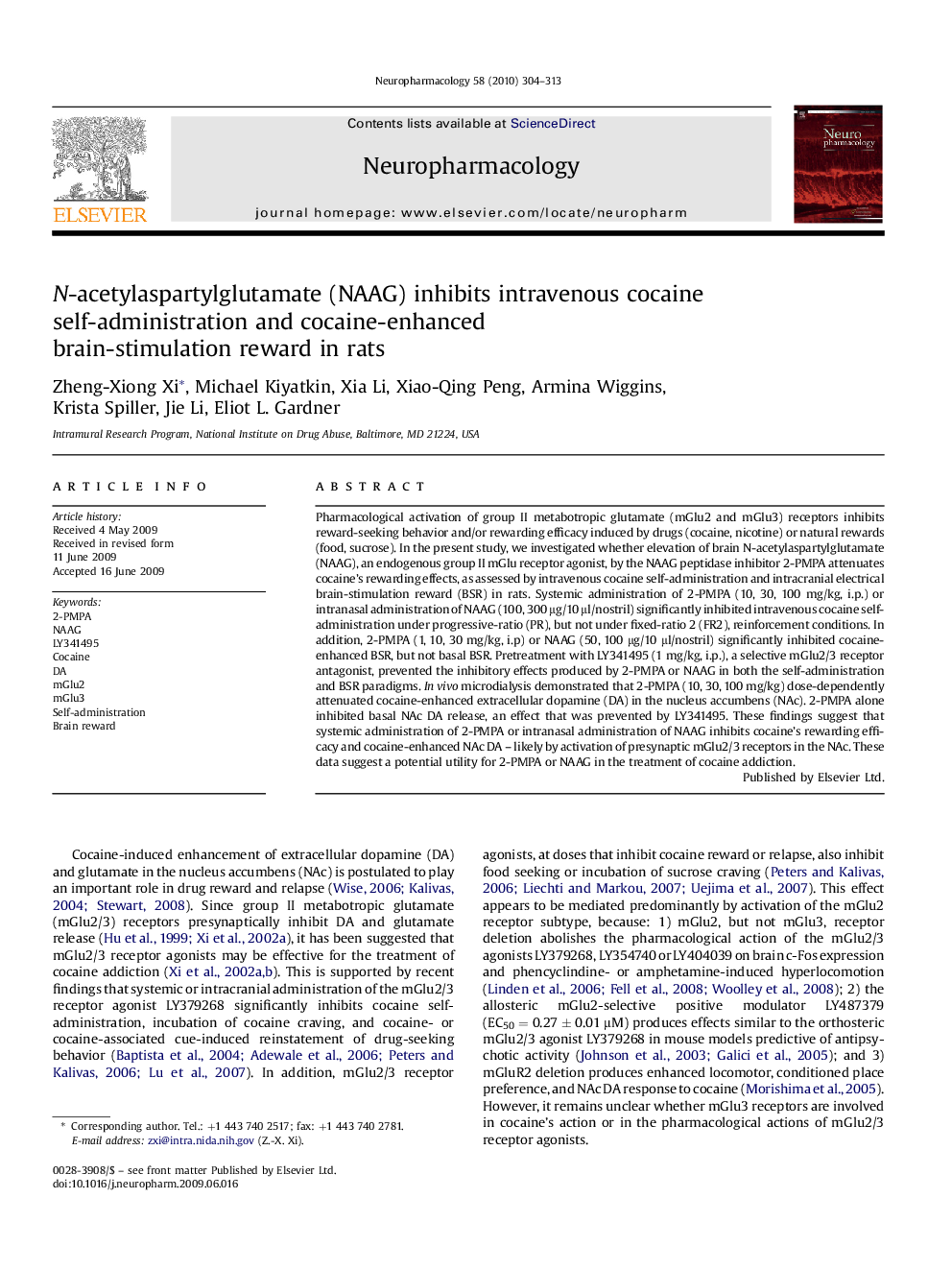| Article ID | Journal | Published Year | Pages | File Type |
|---|---|---|---|---|
| 2494199 | Neuropharmacology | 2010 | 10 Pages |
Pharmacological activation of group II metabotropic glutamate (mGlu2 and mGlu3) receptors inhibits reward-seeking behavior and/or rewarding efficacy induced by drugs (cocaine, nicotine) or natural rewards (food, sucrose). In the present study, we investigated whether elevation of brain N-acetylaspartylglutamate (NAAG), an endogenous group II mGlu receptor agonist, by the NAAG peptidase inhibitor 2-PMPA attenuates cocaine's rewarding effects, as assessed by intravenous cocaine self-administration and intracranial electrical brain-stimulation reward (BSR) in rats. Systemic administration of 2-PMPA (10, 30, 100 mg/kg, i.p.) or intranasal administration of NAAG (100, 300 μg/10 μl/nostril) significantly inhibited intravenous cocaine self-administration under progressive-ratio (PR), but not under fixed-ratio 2 (FR2), reinforcement conditions. In addition, 2-PMPA (1, 10, 30 mg/kg, i.p) or NAAG (50, 100 μg/10 μl/nostril) significantly inhibited cocaine-enhanced BSR, but not basal BSR. Pretreatment with LY341495 (1 mg/kg, i.p.), a selective mGlu2/3 receptor antagonist, prevented the inhibitory effects produced by 2-PMPA or NAAG in both the self-administration and BSR paradigms. In vivo microdialysis demonstrated that 2-PMPA (10, 30, 100 mg/kg) dose-dependently attenuated cocaine-enhanced extracellular dopamine (DA) in the nucleus accumbens (NAc). 2-PMPA alone inhibited basal NAc DA release, an effect that was prevented by LY341495. These findings suggest that systemic administration of 2-PMPA or intranasal administration of NAAG inhibits cocaine's rewarding efficacy and cocaine-enhanced NAc DA – likely by activation of presynaptic mGlu2/3 receptors in the NAc. These data suggest a potential utility for 2-PMPA or NAAG in the treatment of cocaine addiction.
